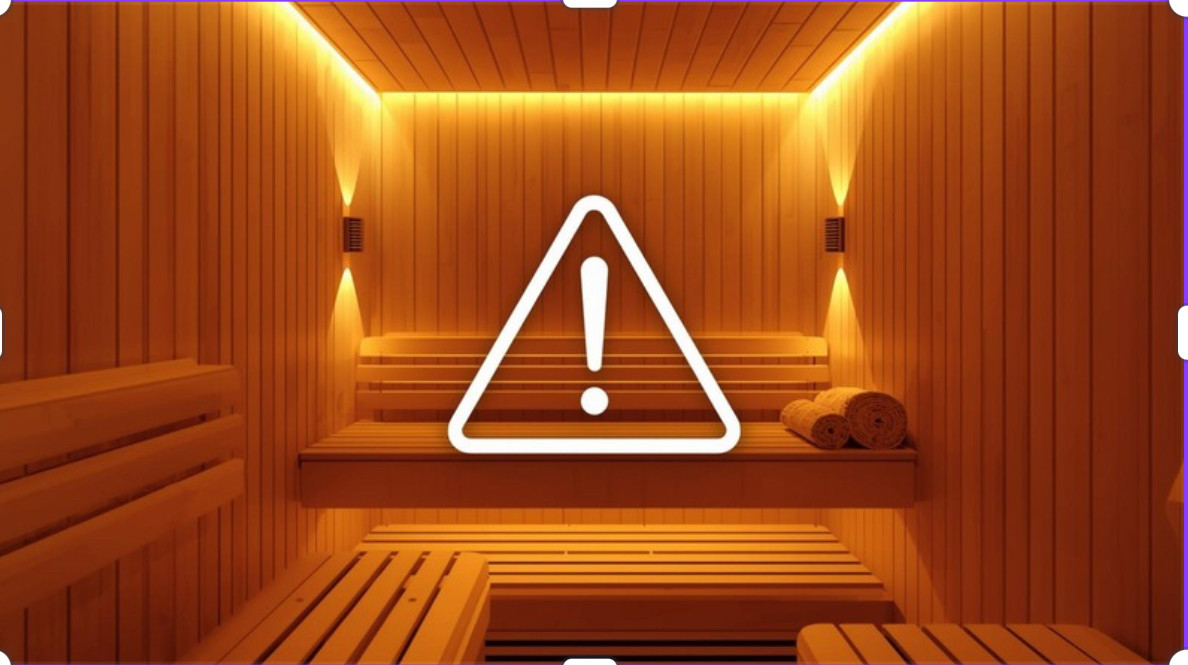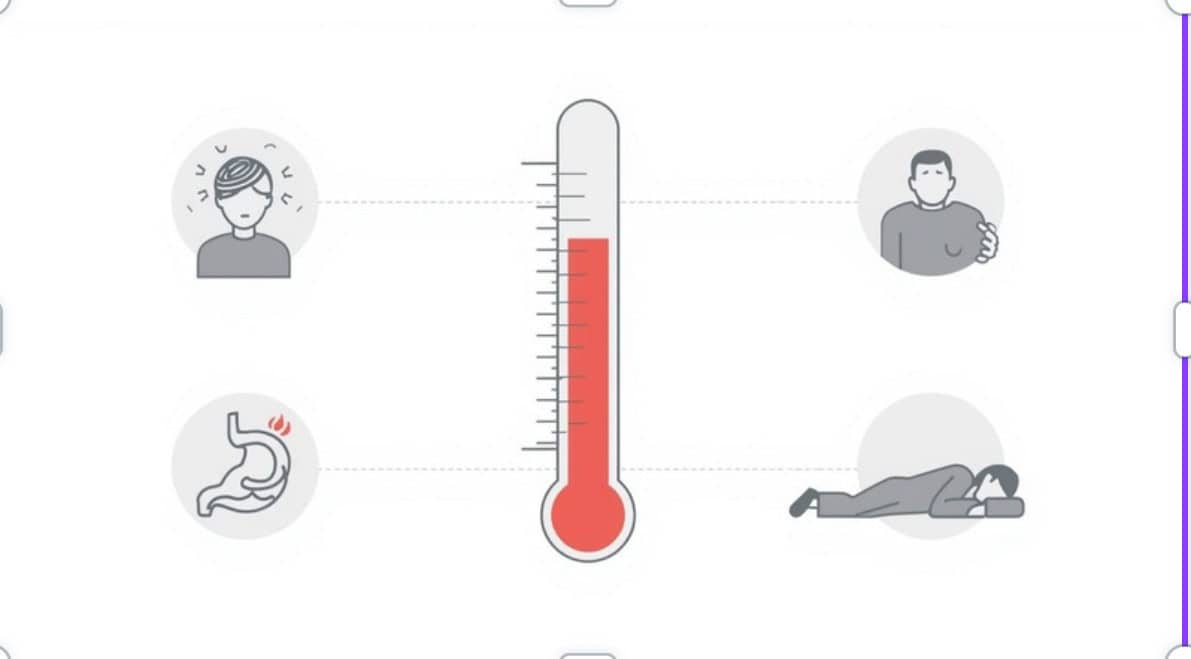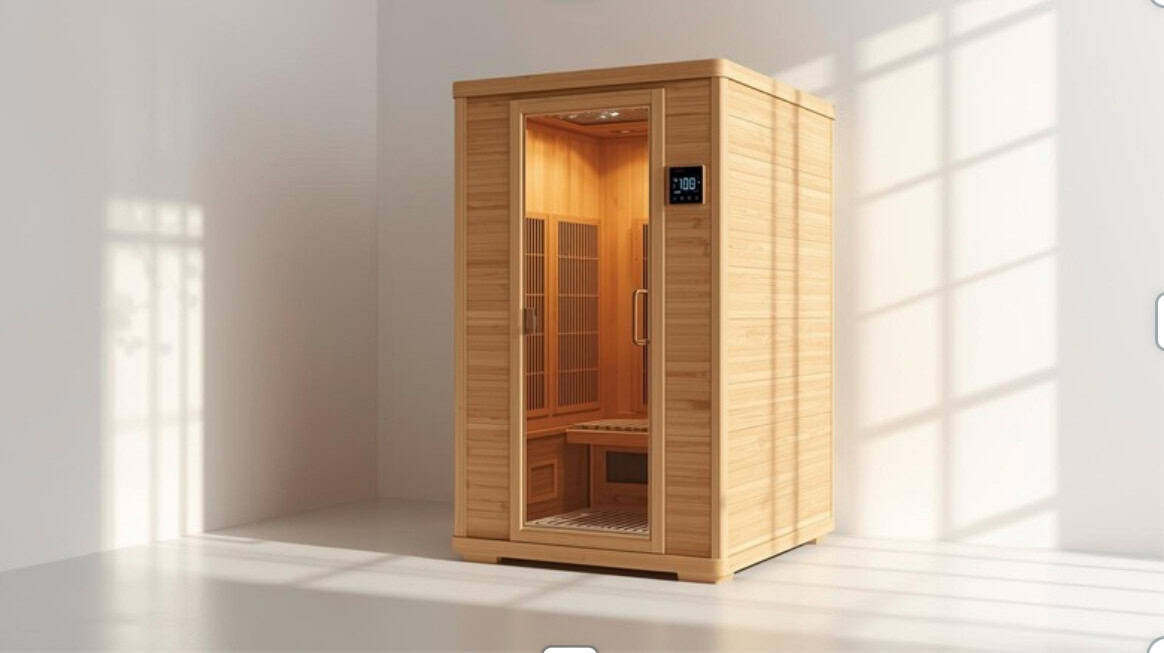Infrared Sauna Risks & Contraindications: What You Need to Know Before You Sweat

🔥 Infrared saunas are praised for their many health benefits, but like any wellness tool, they’re not risk-free. Understanding infrared sauna risks is essential for safe use—especially if you have pre-existing health conditions or are new to heat therapy. In this guide, we’ll cover contraindications, potential side effects, and practical tips to minimize risk, so you can sweat smarter, not harder. 💧
We’ll also share how to identify when to avoid sauna use, how to listen to your body, and which models are considered safest for sensitive users. By the end, you’ll have a clear roadmap for safe sauna sessions that support your health—not jeopardize it. ✅
Dehydration: The #1 Infrared Sauna Risk (and How to Avoid It) 💧
Most adverse sauna reactions start with simple fluid loss. Infrared heat drives sweat without the same “stuffy” air feel of traditional saunas, so you may not notice how much you’re losing until dizziness or a pounding headache hits.
Warning signs to watch for
- Dry mouth, thirst that doesn’t resolve with a few sips
- Lightheadedness when standing, brain fog, headache
- Muscle cramps or a “racing” pulse
- Dark yellow urine or low output after a session
Simple prevention plan
- Pre-hydrate: 12–20 oz water 60–90 minutes before your session.
- Electrolytes: Add sodium, potassium, and magnesium on sauna days (tablets or low-sugar mixes). Plain water alone can dilute electrolytes.
- Session length: Start with 10–15 minutes and add 2–3 minutes per week as tolerated.
- Post-sauna: Replace fluids 1:1 with what you likely lost (another 12–20 oz), then reassess thirst.
New to heat therapy? Pair this guide with our step-by-step primer, How to Use an Infrared Sauna Safely, and scan foundational infrared sauna benefits so you’re clear on risks vs rewards.

Overheating: From “Too Hot” to Heat Exhaustion 🥵
Infrared cabins typically run 110–150°F, which feels gentler than 180–200°F traditional saunas—but overheating can still happen, especially if you stack long sessions back-to-back.
Know the stages
- Early overheat: flushing, excessive sweating, rising heart rate, anxiety
- Heat exhaustion: nausea, weakness, dizziness, chills, headache
- Heat stroke (medical emergency): confusion, fainting, very hot skin, fast pulse—stop and seek care immediately
Practical guardrails
- Cap time: Beginners 10–15 minutes; most users 20–30 minutes max per session.
- Cool breaks: Open the door, sit on a towel edge, or step out for 1–2 minutes if your heart rate spikes.
- Temperature: Start 115–125°F and only increase when sessions feel easy.
- Avoid back-to-back stressors: If you train hard, avoid high-heat sessions immediately before workouts; consider post-workout sauna instead.
Timing matters for sleep and recovery, too. See the best time to use an infrared sauna for smarter scheduling.

Medication Interactions & Conditions: Who Needs Extra Caution ⚠️
Heat exposure can amplify or blunt certain drugs’ effects and stress vulnerable systems. This isn’t individual medical advice—always check with your clinician—but use the list below to guide a conversation before you start.
Med classes that often warrant caution
- Antihypertensives & vasodilators (e.g., ACE inhibitors, ARBs, nitrates): risk of low blood pressure or dizziness.
- Diuretics (“water pills”): dehydration and electrolyte loss can compound sauna-induced sweating.
- Beta blockers: may blunt heart-rate rise, masking overheating signs.
- Stimulants (ADHD meds, decongestants): can raise heart rate/temperature.
- Anticholinergics & some antihistamines: reduced sweating impairs cooling.
- Alcohol or sedatives: dehydration and impaired judgment—avoid saunas entirely when used.
Health situations to discuss with your doctor
- Cardiovascular disease, arrhythmias, uncontrolled blood pressure (see our primer on infrared sauna for heart health)
- Pregnancy (any trimester): most clinicians advise avoiding high-heat exposures
- Recent illness, fever, or dehydration
- Autonomic dysfunction (e.g., POTS), neuropathy, or impaired heat sensation
- Skin conditions with open lesions or infections
If you have multiple risk factors, choose shorter, cooler sessions and consider models marketed as low-EMF, gentle-heat options. We explain selection criteria in our Buyer’s Guide.

Who Should Avoid Infrared Saunas Entirely 🚫
While many people can safely enjoy infrared sessions, some groups are at higher risk and often advised to skip sauna use altogether:
- Pregnant individuals: Heat exposure is linked to neural tube defects in early pregnancy and overheating later on.
- Infants and young children: Immature thermoregulation makes them highly vulnerable to overheating.
- Older adults with frailty or uncontrolled conditions: Reduced thirst and cardiovascular reserve can increase risks.
- Anyone with contagious illness: High temps may worsen dehydration and spread pathogens in shared spaces.
If you’re in a gray area (e.g., postpartum, immunocompromised), confirm safety with your healthcare provider first. Contact Sauna Sage if you’d like more personalized guidance or resource links to discuss with your doctor.
Skin Risks: Rashes, Burns & Irritation 🔥
Though rare, skin reactions can occur. Infrared light penetrates deeper than traditional heat, which may aggravate certain skin conditions.
Potential issues
- Heat rash: Small red bumps from blocked sweat ducts
- Dryness or itching: Sweating strips natural oils
- Photosensitivity: Certain antibiotics or acne meds (like tetracyclines, isotretinoin) increase sensitivity
- Minor burns: From prolonged contact with hot panels or metal fixtures
Prevention tips
- Sit on towels to reduce direct contact with hot surfaces
- Use fragrance-free moisturizer after sessions
- Avoid saunas while on photosensitizing medications
- Check panel surfaces before leaning or resting against them
Curious how infrared compares with other heating methods for skin? See our infrared sauna for skin health guide.
Immune Risks: When Fighting Off Illness 🤒
Infrared heat can temporarily raise white blood cell activity, which is generally supportive of immunity. But if you’re already sick, sauna use may backfire.
Times to avoid
- Fever: Additional heat can worsen dehydration and strain the body
- Respiratory infection: Heat may exacerbate breathing difficulties
- Open wounds or skin infections: Heat/moisture provide a growth-friendly environment for bacteria
Once you’ve recovered, gradual sauna use may help strengthen defenses. For broader perspective, read infrared sauna immune support.
EMF Exposure & Build Quality Concerns ⚡
Another debated topic is electromagnetic field (EMF) exposure. While most high-end infrared saunas advertise “low EMF,” cheaper imports may lack adequate shielding. Long-term health effects remain under study, but if you’re concerned, it makes sense to choose carefully.
Key considerations
- Low-EMF certification: Look for brands that independently test for EMF and ELF (extremely low frequency)
- Panel placement: Avoid models with panels directly behind the head or brain
- Build quality: Poor wiring or cheap adhesives can off-gas VOCs when heated
Want safer recommendations? Explore our Best Infrared Saunas 2025 Buyer’s Guide, where we highlight low-EMF, high-quality models from trusted partners like Therasage and 1LoveHealth.
Safe Session Controls: Temperature, Time, Ventilation 🧭
Even healthy users can run into trouble if the cabin is too hot, sessions run too long, or the space is poorly ventilated. Use these fail-safes to keep risk low:
Smart starting points
- Temperature: 115–125°F for beginners; only increase when you consistently feel good during/after sessions.
- Time: 10–15 minutes to start; most users top out at 20–30 minutes.
- Pacing: 2–4 sessions/week at first; add frequency gradually.
- Airflow: Crack the door if the cabin feels “stuffy” or your heart rate spikes.
- Hydration guardrails: Bring 16–20 oz of water into the cabin; sip every 5 minutes.
For deeper planning, see our best-time scheduling guide and bookmark the Infrared Sauna Blog index for ongoing tips.
Quick Triage: Should You Sauna Today? ✅/🚫
Run this 60-second checklist before every session:
- 😰 Feeling ill, feverish, or dehydrated? Skip today.
- 💊 New meds (diuretics, vasodilators, stimulants, anticholinergics)? Get clinician clearance first.
- 🫀 Uncontrolled heart/blood pressure symptoms? Defer and consult.
- 🤰 Pregnant/postpartum? Avoid unless specifically cleared.
- 🧴 Photosensitizing drugs/active rashes? Skip until resolved.
- ⏱️ First week or returning after a break? Start 115–120°F, 10–12 minutes.
If any “🚫” appears, review our Beginner’s Safety Guide or contact us for resources to discuss with your provider.
Safer Picks: Low-EMF, Quality Materials & Thoughtful Design 🛡️
If you’re risk-averse or sensitive to heat, consider models emphasizing low EMF/ELF, steady heat, and clean materials. These partners meet our baseline quality criteria:
- Therasage (portable/dome options): steady heat at lower temps; travel-friendly. Shop Therasage (SAUNASAGE20 auto-applied)
- 1LoveHealth (portable blankets/cabins): approachable pricing; beginner-friendly. See 1LoveHealth picks
- Momentum98 (dome systems): focused heat with short, controllable sessions. Explore Momentum98
- Select Saunas (full-size cabins): premium builds, low EMF testing. Shop Select Saunas
Compare features in our comprehensive Buyer’s Guide. Affiliate disclosure: We may earn a commission at no extra cost to you—this supports independent testing and research.

Your Personal Safety Plan (Copy/Paste) 📝
- Pre-session (60–90 min prior): 12–20 oz water + electrolytes; light snack if prone to dizziness.
- Setup: 115–125°F, towel on seat, water bottle inside, timer set to 12–20 min.
- During: Sip every 5 min; open door if HR spikes; end if dizzy/nauseated.
- Post: 12–20 oz fluids + electrolytes; cool shower; fragrance-free moisturizer for skin.
- Monitor: Sleep quality, resting HR, and energy next day; reduce time/temp if recovery lags.
New to the site? Browse the Infrared Sauna Blog and our science primer 5 Infrared Sauna Benefits (Backed by Science).
Bottom Line: Respect the Heat, Reap the Benefits ✅
Infrared saunas can be a powerful tool for recovery, stress relief, and overall wellness—but only when used wisely. Start low and slow, hydrate with electrolytes, and stop at the first sign of dizziness, nausea, or confusion. If you take medications, have cardiovascular issues, or are pregnant, talk to your clinician before you begin.
Next steps:
- Plan sessions with our best-time guide
- Compare low-EMF, high-quality sauna picks
- Have a question? Contact Sauna Sage
Used with intention, infrared heat can support your health—without unnecessary risk. 🔥💧

